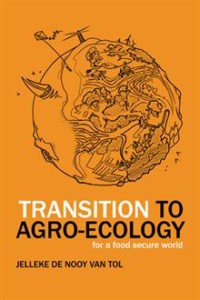Title: Transition to Agro-Ecology: For a Food Secure World
Author: Jelleke de Nooy van Tol
Publisher: AuthorHouseUK
ISBN: 978-1-5243-336-3
Pages: 262
Genre: Business & Economics
Reviewed by: Liz Konkel
Buy on Amazon
Pacific Book Review
Transition to Agro-Ecology by author Jelleke de Nooy van Tol strives to make the word a better place. Sounds like a fantasy but the desire to create a utopian world through ways changing to a global society is shown to the reader. There are technical terms, jargon, and a heavy amount of information, but everything throughout this informative reveal is explained. As someone who had the faintest idea of agro-ecology, I feel as if I learned a lot after reading this book. The introduction lists the target reader: “For frontrunners and trendsetters this is a must read,” and “People in agriculture and food production may find a practical overview about what is going on in the world at different scale levels.” But any adult who cares about the future of our world can gain knowledge. You don’t need to be in agriculture nor a trendsetter to care about what is being said.
Transition to Agro-Ecology is about our past, our present, and our future as a global society. What exactly is agro-ecology? I didn’t know the correct definition until I read this: “The application of ecological principles to the production of food, fuel, fiber, and pharmaceuticals, and to the management of agriculture, the growing of crops, as an ecological system.” Charts and illustrations help put an image to the thoughts and concepts described. The strengths include the vast knowledge of the topic from the four elementary functions of the ecosystem (water cycle, nutrient cycle, energy balance, dynamism in a society) to the concept of farming at sea; there are more ideas than I’ve ever considered. The actual details of farming at sea goes back to 1870 in 20,000 Leagues under the Sea when Captain Nemo announced that sea life could sustain the world. The idea was furthered by William Brandenburg, hoping to grow and harvest seaweed as a new protein-rich crop for our growing food demand.
The Community Supported Agriculture (CSA) is just one of the groups used as an example: “A group of consumers supports the farmer (or enterprise) by investing in the production before the growing season starts.” FAO: the Food and Agriculture organization of the UN promotes a transformation to climate smart agriculture. As someone who’s not studied this concept before, examples such as these helped put things into perspective for me.
Growing up in a rural community on a farm, I’ve spent my life with animals, specifically cows. My dad would use manure from our rabbits for his garden, and unless there was a frost, the garden would be abundant. I was able to relate what I do know to what I was learning. That’s where this book shines. It doesn’t just claim to be a potential global solution, the examples are global. Smallholder farming in Africa, the International Institute for Environment and Development in London, and NGO’s are just a few among topics covered in the book. This is a book that will spark several discussions, because the passion for a change is clear in the writing. This is a must read for anyone seeking a new passion project and cares about the world we live in.



Follow Us